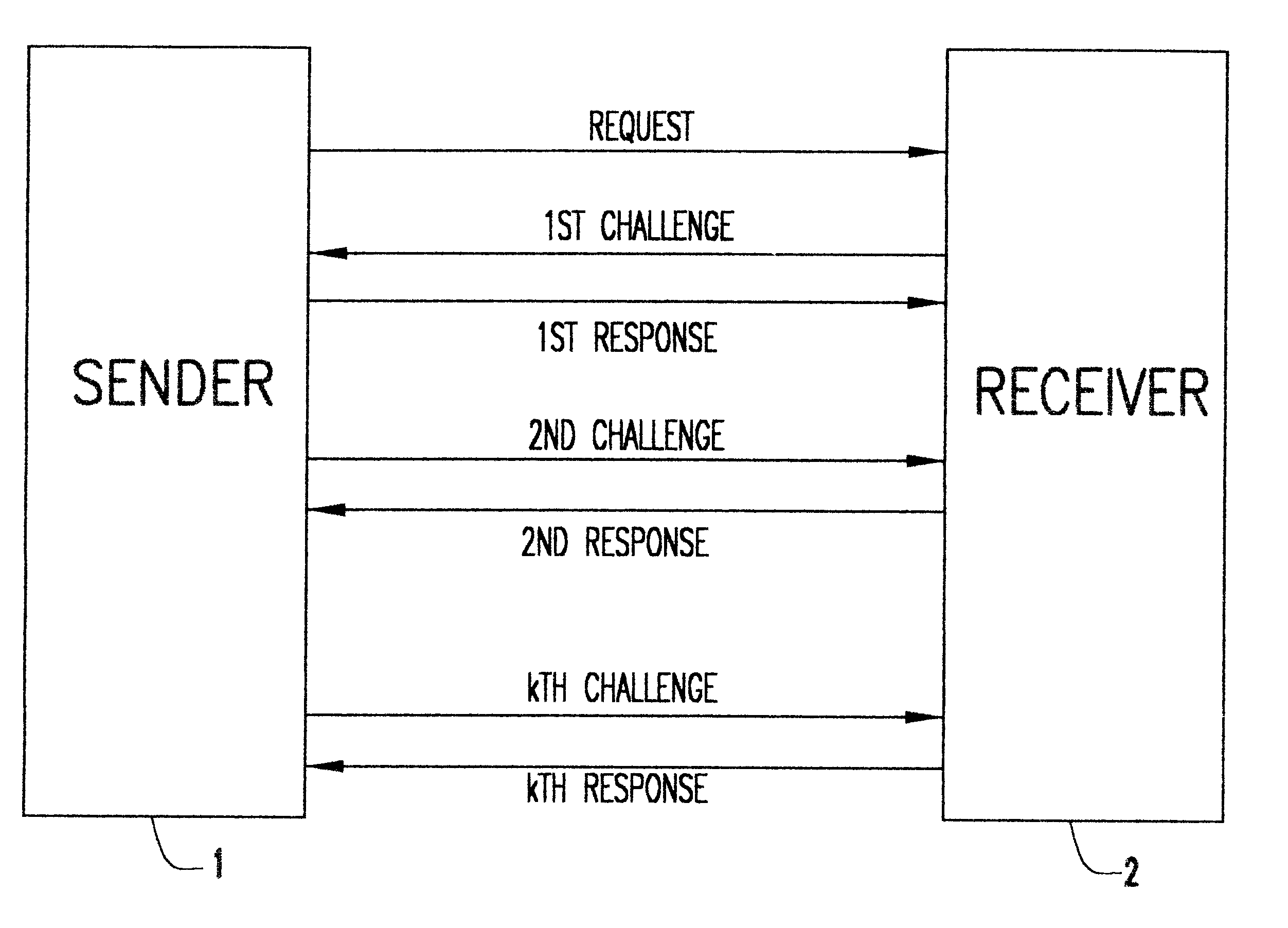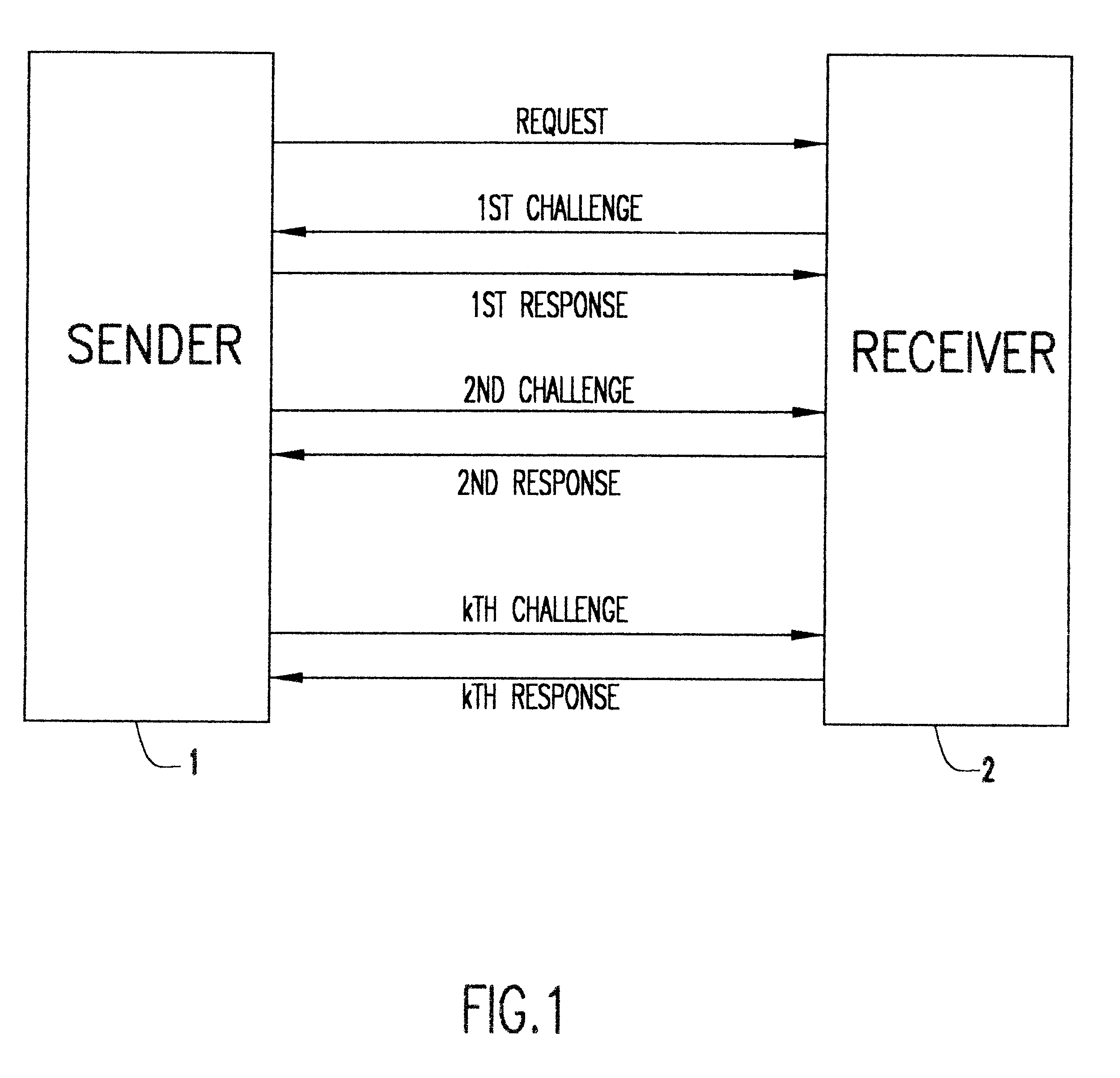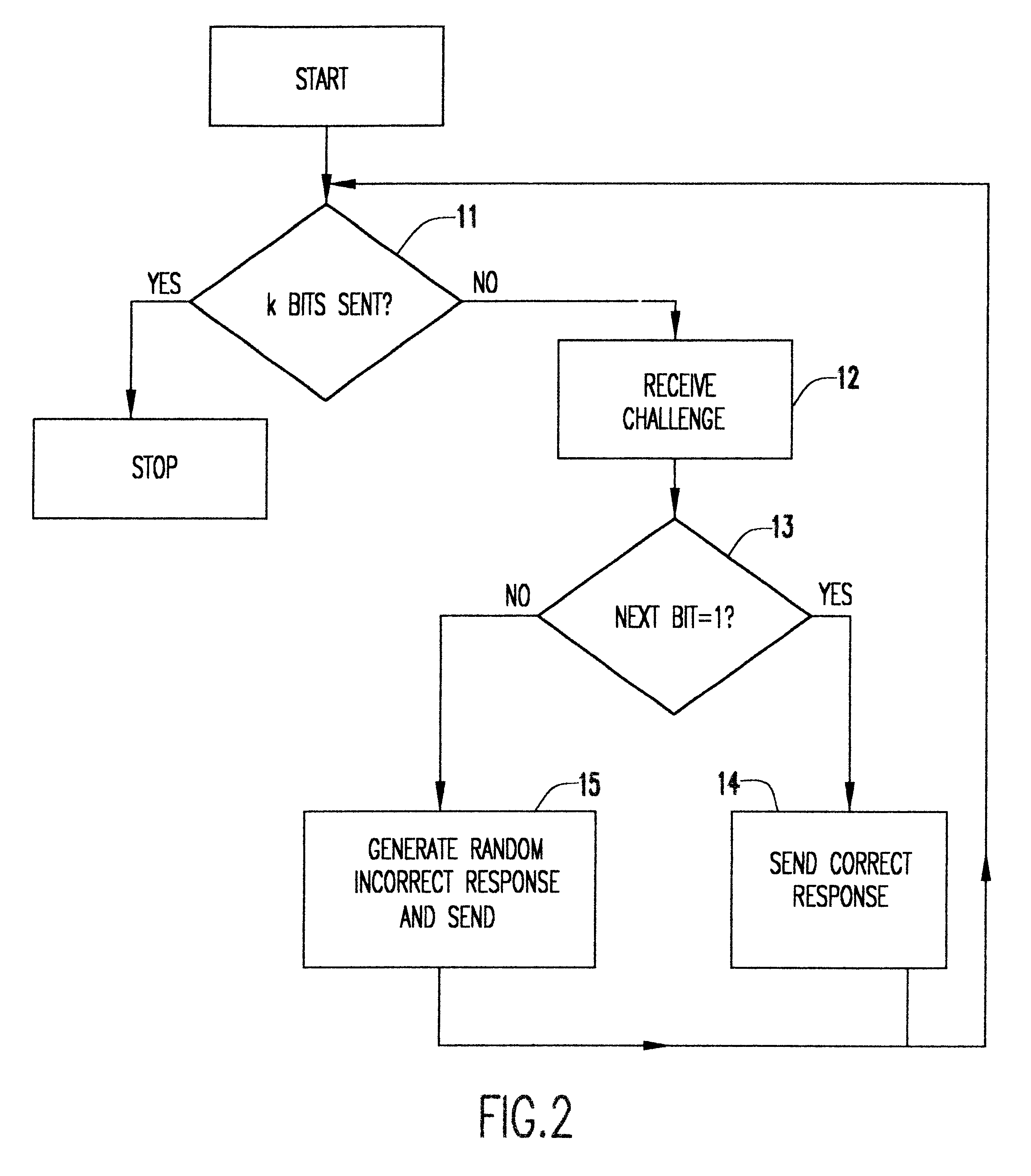Keyless encryption of messages using challenge response
- Summary
- Abstract
- Description
- Claims
- Application Information
AI Technical Summary
Problems solved by technology
Method used
Image
Examples
Embodiment Construction
Referring now to the drawings, and more particularly to FIG. 1, there is illustrated in block diagram form the protocol used to transmit data between a sender 1 and a receiver 2.
1. The sender sends the receiver a request to begin transmission.
2. Upon getting the request, the receiver responds with a challenge, illustrated in FIG. 1 as the 1.sup.st challenge.
3. The sender receives the 1.sup.st challenge. Then:
A. If the bit to be transmitted is a one, he sends the correct response for the challenge received.
B. Otherwise, he generates a random incorrect response and sends it.
4. Steps 2 and 3 are repeated k times, or as many times as there are bits left in the message.
This protocol is illustrated in flowcharts of FIGS. 2 and 3 for the sender and receiver, respectively. The processing loop at the sender (FIG. 2) is entered at decision block 11 where a test is made to determine if all k bits of the message have been sent. If not, a challenge is received from the receiver in function block...
PUM
 Login to View More
Login to View More Abstract
Description
Claims
Application Information
 Login to View More
Login to View More - R&D
- Intellectual Property
- Life Sciences
- Materials
- Tech Scout
- Unparalleled Data Quality
- Higher Quality Content
- 60% Fewer Hallucinations
Browse by: Latest US Patents, China's latest patents, Technical Efficacy Thesaurus, Application Domain, Technology Topic, Popular Technical Reports.
© 2025 PatSnap. All rights reserved.Legal|Privacy policy|Modern Slavery Act Transparency Statement|Sitemap|About US| Contact US: help@patsnap.com



